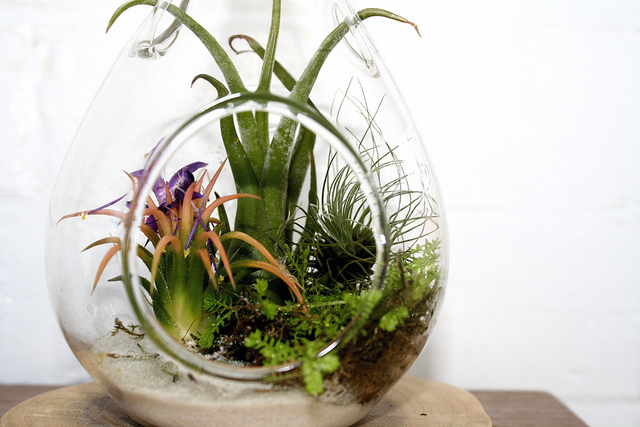Back in 2012, I decided to go green and stopped using toxic products in my home.
When we needed to paint, I used products with no VOC emissions. We buy certified organic products whenever possible. I have been using HEPA filters since the 90’s for my allergies, and this year we bought an electrostatic whole-home air cleaner (Honeywell F300A ) thinking this would be even better.
For some reason though, I found myself getting sicker and sicker as 2014 went on. I thought I had a sinus infection I couldn’t kick and had a long list of symptoms that were getting worse and worse. But one day I had friend over and she told me she could smell ozone in my home (didn’t hurt that she was a scientist). She asked what kind of air cleaner I had and suggested it might be causing problems.
Having nothing to lose, I turned it off, opened all the windows in the house and started to feel better shortly after. A lot better.
I then spent about a week with my husband dropping everything and digging into indoor air quality issues, determined to get to the bottom of things. We turned to the EPA and other consumer protection groups who weren’t trying to sell us anything for answers…
What We Discovered
Turns out I am highly sensitive to ozone. While not everyone has that kind of immediate reaction to it, the EPA states that there is no “safe” level of ozone for anyone (despite legal limits) and it is described by the American Lung Association as “the most widespread air pollutant, and one of the most dangerous.”
Furthermore, the EPA says that ozone air ‘cleaners’ do not actually remove dust and pollen as the products claim (unless they also HEPA contain filters). Plus, it increases the effects of other air pollutants, so these ‘air cleaners’ would more aptly named ‘air polluters’.
If you want an air cleaner that actually cleans the air of dust and pollen, you want to get a HEPA filter that does not emit any ozone (unfortunately, Honeywell does not make those anymore for the whole house, so don’t waste your time browsing any of their products).
Ozone is also emitted from copy machines, printers, hair dryers, electronic equipment, etc. and is a big problem in many offices.
Culprit: Formaldehyde
We went on to learn that the biggest polluter in residential homes in formaldehyde. We already knew that air quality levels were at dangerous levels in a high percentage of American homes, but I didn’t know that this gas was the worst offender. So how to get rid of it?
You can’t (entirely)! Formaldehyde is in so many things in your home—particularly wood based products like cabinets, door frames, furniture, flooring, anything made with particle board—that it is totally unrealistic to get rid of it all.
And while off-gassing is worst when you first buy something and will decline from there, it does not drop off after a number of years, but will continue to off-gas as the years go on.
Solutions: Proper Ventilation (and plants are good too!)
Since the off-gassing party just keep going, you need fresh air brought into your house continuously, and bad air to be expelled. Opening windows all over the house every day will help a bit, but besides not being energy efficient, that actually does not flush out more than a small percentage of the air in your home.
Ideally, you want a whole-home fan (probably connected to your thermostat) that runs continually that breathes air in and out from the outdoors.
If, like us, you recently did weatherizing to make your home more energy efficient, this can actually work against you and make those pollutants get trapped even more unless you are addressing the ventilation issue at the same time.
So weatherize and ventilate!
Another tip is to get some plants—especially broad leafed ones. They can increase humidity and you would need a whole lot of them to make a major difference, but they eat ozone, and some eat formaldehyde too. I keep a plant near all of my electronic areas (TV, computer, etc.)
Culprit: What’s in your Garage?
So when we moved into our home, the previous owners left all kinds of nasty products behind (you know, ‘every day cleaners’ like bleach, plus toxic chemicals to treat the house and yard, etc. Knowing that you are not supposed to take that stuff to the dump, but that it needs to be disposed of at a hazardous waste site, and that there was not one super close to us, we just left all that stuff in the garage to ‘get to later.’ Big mistake!
We have since learned that these substances can still leak into the house and contribute to indoor air pollution, as can the car. Your car is loaded with toxins that will frequently be sucked into the house every time you open the door to/from the garage (and seep in through cracks). Who knew!?
Solution:
It is best to not park your car in an attached garage (park outside or use a detached garage if possible). Also, remove all toxic substances from your home and garage.
To take that a step further, shoes are another thing that do not belong indoors. This kind of blew my mind, but I guess it makes sense when you think about all the places you go—grocery stores, offices, etc. and all the nasty chemicals you step through. Ideally, you should wipe them on a mat before entering the home, then remove them and don’t leave them out in an open living space.
Who is Chemically Sensitive?
Symptoms of chemical sensitivity could be just about anything (tired, headaches, dizziness, aches and pains, etc.), but if you want to test it, you might start paying attention to whether or not you feel better when you are outdoors (not in a high pollution area or in a high pollen area if you have allergies).
Some people are born more sensitive than others, but often people develop chemical sensitivities over time based on exposure and levels of toxicity, and what used to not bother you can suddenly cause a lot of problems. Also, chemical problems can aggravate other allergic problems quite a bit, so you may think you have a major dust issue, but the bigger underlying issue may be the formaldehyde you are sucking in constantly.
In general, just paying attention more to how you feel in different spaces is a good practice—developing greater awareness to how your environment is in or out of balance.
**
References/Further reading:
Yale University study finds no safe levels for ozone
Ozone Generators that are Sold as Air Cleaners. EPA. Discusses risk of ozone even at small amounts of exposure within legal, interaction of ozone with other VOCs, how air cleaners with ozone do not actually even remove impurities from the air, the importance of proper ventilation.
American Lung Association’s stance on ozone.
Guide to purifier types and technologies. Consumer Reports. This discusses the benefits of HEPA filter and the dangers of an air cleaner with ozone. (I called Honeywell and spoke with a supervisor who informed me Honeywell is no longer making ozone-free whole-house HEPA air cleaners.)
The Inside Story: A Guide to Indoor Air Quality. More info on importance of proper ventilation, weatherizing, VOCs in the home, all about formaldehyde, symptoms, etc.
Improving Your Home’s Indoor Air Quality: From Basic to Bigger and Better Steps
Best Air Filtering Houseplants According to NASA
http://www.seattle.gov/util/MyServices/Garbage/SpecialorHazardousItems/HouseholdHazardousWaste/index.htm On how common household products are considered hazardous waste
Carbon Monoxide Poisoning: Garages (AEN-207)
Volatile Organic Compounds (VOCs) in Commonly Used Products. How toxic chemicals can affect indoor air quality by seeping through cracks into your indoor living spaces from basement or garage.
Relephant:
Three essential houseplants for clean indoor air.
Author: Arika Rapson
Editor: Renée Picard
Images: amy gizienski/Flickr












Read 3 comments and reply